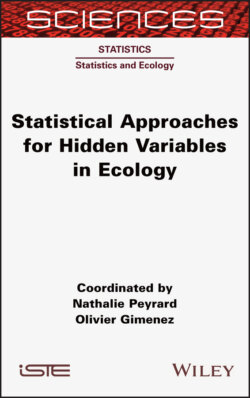Читать книгу Statistical Approaches for Hidden Variables in Ecology - Nathalie Peyrard - Страница 30
1.2.2.6. Reconstruction of hidden states
ОглавлениеThe reconstruction of hidden activities allows us to identify homogeneous phases in behaviors, and is often of considerable interest from an ecological perspective. This hidden Markov model may thus be seen as an unsupervised segmentation/ classification model for movement.
One possibility is to reconstruct the most likely hidden activity for each time increment in turn, taking such that
This method is known as the maximum a posteriori (MAP) method. One possible problem with the estimator [1.10] is that it provides no guarantee that the sequence 0:n will be coherent with the transition matrix Π; it may give a result of t = 1 and t+1 = 2 for an estimation , for example.
Using a Bayesian approach, the sampling algorithms used to estimate parameters permit the use of a joint smoothing distribution, that is, samples of Z0:n|Y0:n can be obtained. Each sample produced is thus a possible sequence of activities corresponding to given observations.
Sampling across this distribution can also be carried out in conjunction with a frequentist approach, but the combinatorial level is high and the computational effort involved rapidly becomes prohibitive as n increases. Hidden activities are most commonly reconstructed using the most probable sequence of hidden states, that is, which maximizes the overall a posteriori distribution, or, more formally,
This sequence can be calculated in an efficient manner using the Viterbi algorithm, and is the version which is generally returned by libraries offering frequentist estimation. Note that the m most probable sequences can be obtained using the generalized Viterbi algorithm (Guédon 2007).
